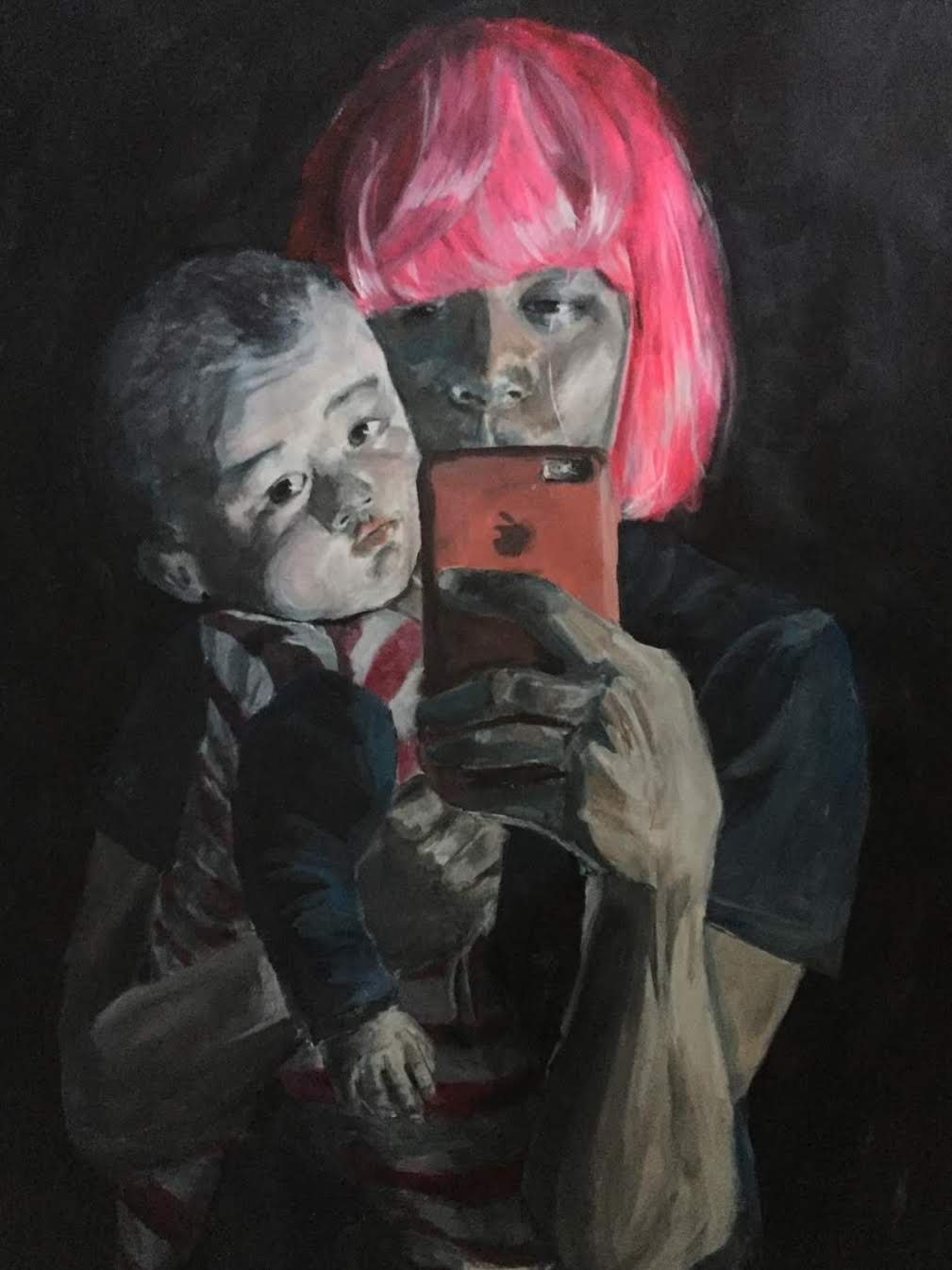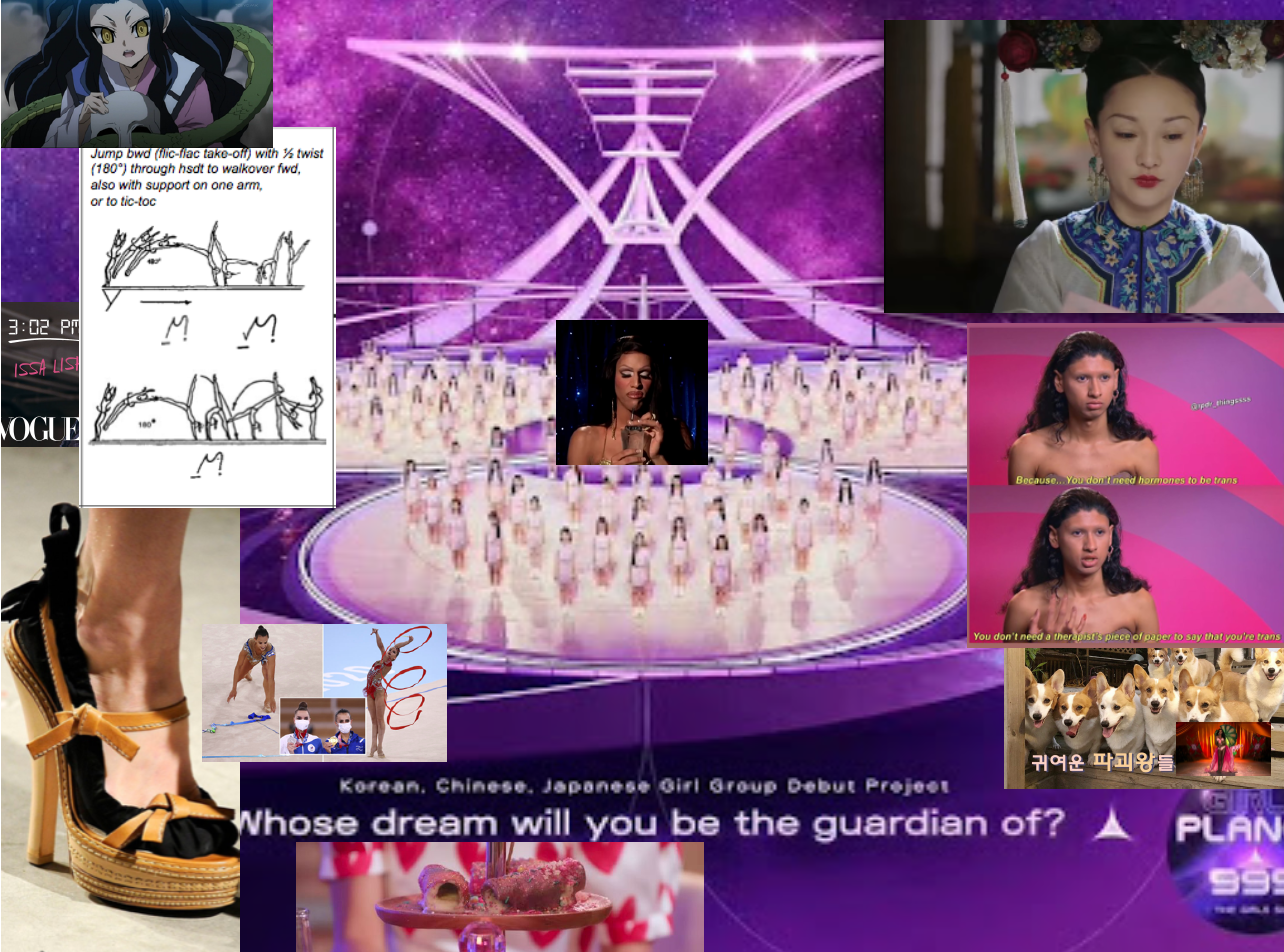Fresh Faces: Safwan Ahman
Intertwining art and culture with taboo conversations
By Aqilah Ali
A&M's Fresh Faces is where we profile an emerging artist from the region every month and speak to them about how they kick-started their career, how they continue to sustain their practice and what drives them as artists. Read our profile on Safwan Ahman here.
Safwan Ahman. Photo by Safwan Haji Mohammad.
To start off, could you share with us your journey into art and what it is like being a young artist in Brunei Darussalam?
I have always had an itch to draw. Whether it was during class or in the exam hall, I was constantly drawing. My Babah (father), Ahman bin Haji Tusin, is an artist himself and he convinced me to take art for A-levels. I ended up having the best time because I learnt a lot from my classmates and from my teacher, Sir Faizal Hamdan. I even participated in my first school exhibition. Though I stopped painting to pursue a BSc in Computer Science at Newcastle University, I started again after my graduation in 2017.
Being an artist in Brunei means that the platform that I would show my work on is Instagram. That has helped me connect with amazing local artists like Wryck Ret and Aainaa Sofiyah, who pushed me out of my comfort zone. This is something I am eternally grateful for.
Whose artistic works play an important influence on your own?
Leonardo da Vinci’s ‘The Last Supper’. I did not think much of it when I first saw it as a kid. I just thought it was a pretty cool piece of work until I attended a talk about the painting and discovered the true depth of how da Vinci hinted at the scene with colours, shadows and how the disciples’ hands were painted. My mind was blown at how dramatic and beautiful it all was. So I was inspired to do the same: to give depth to a painting so the more you look at it, the more messages you would discover.
What is an important piece of advice you have received as a young artist?
Sir Faizal once told me “sometimes, it’s better when it’s unfinished”. It took me a while to decipher this but I got it in the end to mean that one should not overthink it. Back then, I never knew when my paintings were finished. Now, if I simply feel that my painting is done, I would leave it. Sometimes, an unfinished painting is a finished painting.
When I received backlash about my paintings, my Babah said to me “Jangantah peduli pasal orang lain, kalau ada bawa positif arah orang bisai sudah tu”. This means: “Don’t care about what other people think, just look at how it positively impacts the rest”. It is something I have said to myself before, but hearing it from the artist that I looked up to the most was profoundly reassuring. Sometimes people will not like your work and will not like you for it. Sometimes, there are others who will understand your message and take something positive from it. The second matters more.
“Sometimes people will not like your work and will not like you for it. Sometimes, there are others who will understand your message and take something positive from it. The second matters more.”
Safwan Ahman, ‘Modern Day Madonna and the Baby’, 2016, acrylic on paper, 84.1 x 59.4cm. Image courtesy of artist.
Safwan Ahman, ‘Dayang Siti Ngalih Sudah (Miss Siti is Tired)’, 2020, oil on canvas, 100 x 80cm. Image courtesy of artist.
In the 2020 ‘EMERGE 8: Voice’ exhibition by Creative Space Brunei, you first professionally exhibited with ‘Modern Day Madonna and the Baby’ (2016) and ‘Dayang Siti Ngalih Sudah’ (2020). How did that opportunity come to you and could you talk about your first experience exhibiting with them?
I was scrolling through Instagram one day when I saw Creative Space Brunei’s open call for ‘EMERGE 8: Voice’. Initially, I was intimidated to submit my works and I was worried about the nature of ‘Dayang Siti Ngalih Sudah’ since it featured a Malay woman blatantly giving the middle finger. But a friend encouraged me to join and I realised I had nothing to lose. In the end, both the submitted artworks were accepted.
Since this exhibition was my first outside of school, I was very nervous. I was also so grateful because there was no other place at the time where emerging artists could show their work. I met other talented artists, I learnt about their different mediums and practices, and I connected with an audience who resonated with my message. A lot of firsts happened, including my first sale too. This would not have been possible if it were not for Creative Space Brunei and Osveanne Osman.
Safwan Ahman, ‘Si Awang kan keluar (He wants to come out)’, 2021, oil on canvas, 100 x 80cm. Image courtesy of artist.
Safwan Ahman, ‘Wanita Melayu Terakhir (The Last Malay Woman)’, 2022, oil on canvas, 100 x 80cm. Image courtesy of artist.
Since EMERGE 8, all your public works that followed continued to explore themes of societal pressures and expression of the self, including 'Si Awang kan keluar' (2021) and 'Wanita Melayu Terakhir' (2022). What continues to inspire you in this direction?
Each painting I have created is personal to me. Growing up, I felt pressured to change myself in order to better fit in and like I could not be myself without being made fun of. I then saw how these pressures affected others too. I saw it in my sisters who were treated differently from me because of their gender, in my friends when they were being their truest selves, in many others who do not fit societal norms.
So what if a woman could freely express herself every time someone told her to behave or dress a certain way? I think Dayang Siti flipping them off with a gentle smile is her way of saying “I do not care”. A lot of people approached me, saying they felt seen. On the other hand, a few have come up to me saying how inappropriate it is for a woman to make such a gesture.
Receiving both the good and bad feedback reassured me to paint more of these commentaries. What would Si Awang and Wanita Melayu do in response to being pressured to be ‘normal’? The paintings touch on things that are considered taboo to talk about and they are my way of expressing those thoughts.
“Each painting I have created is personal to me. Growing up, I felt pressured to change myself in order to better fit in and like I could not be myself without being made fun of. I then saw how these pressures affected others too. I saw it in my sisters who were treated differently from me because of their gender, in my friends when they were being their truest selves, in many others who do not fit societal norms.”
There is a consistent incorporation of Malay textiles and garments in your recent work including the songket and batik. How important is heritage and culture to you?
Cultural identity is an important theme in my work. I want to show that being different does not take us away from our culture. I love my culture and I want to show its beauty through the complex patterns of the songket and batik, the bright mix of colours, and how it is worn. I have also chosen to give my paintings titles in my native Brunei-Malay language now to show my roots and cultural identity.
“Cultural identity is an important theme in my work. I want to show that being different does not take us away from our culture. I love my culture and I want to show its beauty through the complex patterns of the songket and batik, the bright mix of colours, and how it is worn. I have also chosen to give my paintings titles in my native Brunei-Malay language now to show my roots and cultural identity.”
What are you currently working on?
I have taken a bit of a break after finishing ‘Wanita Melayu Terakhir’ because of work commitments. Though I do have plans for another painting that speaks with a gentler voice. I might get started on it next year. I am also looking to try to get my paintings exhibited internationally and to meet artists from all over the world.
Lastly, are there other themes, subjects or mediums you would like to explore moving forward? What can audiences expect to see more of in your future work?
I would love to experiment with 3D work and installations. I have worked on a few before and found it gave me more freedom to explore compared to a 2D canvas. I also want to create art that touches on mental health issues that are often overlooked or downplayed. Perhaps painting our folktales too since I love listening to the stories passed down to us.
Safwan Ahman can be contacted here.
About the Writer
Aqilah Ali is a recently awarded Chevening Scholar pursuing an MA in Cultural and Creative Industries at the University of Sussex. Prior to this, she was managing the content team at Brunei-based design agency CTRL+ Creative. When she is not engaging in theatre on the side, she can be found munching on chocolate, attending creative events, or resisting the urge to buy yet another book. Aqilah has written for 1001 Magazine, Art Asia Pacific, and Art & Market.
Aqilah was a participant in the inaugural A&M Education | Art Journalism 101 course.



















